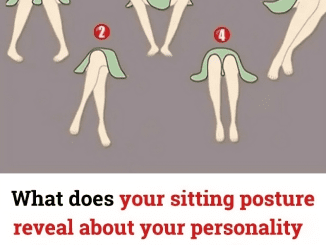Pillows are an integral part of our sleep routine, providing the comfort and support we need to recharge each night. However, even with regular washing, those stubborn yellow stains seem to persist, don’t they? If your mother-in-law or someone else has ever made you feel ashamed of your yellowed pillows, take heart—you’re not alone, and there’s a fix.
Why Do Pillows Turn Yellow? Understanding the Culprit

The yellow stains on your pillows are a result of everyday use. Here’s what typically causes them:
- Sweat and Body Oils: During sleep, your body releases sweat and oils that seep into your pillow. Over time, these build up and cause discoloration.
- Drool: Yes, it happens to the best of us. Saliva can leave protein-based stains that are tough to remove.
- Environmental Factors: Dust, humidity, and even the type of water used for washing can contribute to staining.
Think of your pillow as a sponge—it absorbs everything you throw at it, making regular cleaning essential but not always foolproof.
The Emotional Side of Stained Pillows
Let’s be real—dealing with stained pillows can be embarrassing, especially if someone points it out. It’s easy to feel judged, even if you’re doing your best to keep things clean. But remember, this is a universal issue. Those stains don’t define your housekeeping skills; they’re just a sign of well-loved pillows.
Common Pillow Cleaning Mistakes You Might Be Making
Before you dive into fixing the problem, it’s important to avoid these common pitfalls:
- Infrequent Washing: Waiting too long between washes allows stains to set, making them harder to remove.
- Using Harsh Chemicals: Chlorine bleach might seem like a quick fix, but it can weaken pillow fibers and worsen discoloration over time.
- Improper Drying: Failing to dry pillows thoroughly can lead to mold and mildew, compounding the issue.
- Ignoring the Care Label: Not all pillows can be treated the same way. Missteps here can lead to irreparable damage.
Proven Techniques to Remove Yellow Stains
Ready to rescue your pillows? Follow these tried-and-true steps:
- Check the Care Label: Before anything else, read the label to ensure your cleaning method suits the material.
- Pre-Soak the Pillows: Fill a bathtub or large basin with hot water and add a mixture of mild detergent, one cup of baking soda or white vinegar, and a splash of hydrogen peroxide. Soak the pillows for several hours to loosen the stains.
- Machine Wash on Gentle Cycle: Use warm water and add an enzyme-based detergent or oxygen bleach to the wash. These products are effective against protein-based stains without damaging the fabric.
- Repeat If Necessary: For stubborn stains, repeat the process or apply a fabric-safe stain remover before washing again.
- Thoroughly Dry the Pillows: Use a low-heat setting on your dryer and toss in a couple of clean tennis balls or dryer balls to help fluff the pillows as they dry. Proper drying prevents mold and keeps pillows fresh.
Choosing the Best Cleaning Products for Pillows

Not all cleaning products are created equal, especially when it comes to delicate items like pillows. Here’s what to look for:
- Oxygen Bleach: This is a gentler alternative to chlorine bleach and works wonders in brightening fabrics without causing damage.
- Enzyme-Based Cleaners: These are particularly effective at breaking down proteins from sweat and saliva.
- Mild Detergents: A detergent that’s gentle yet tough on stains is your best bet to preserve pillow quality.
Preventive Measures to Keep Your Pillows Looking New
Prevention is the best way to avoid future staining. Here are some proactive steps:
- Use Pillow Protectors: These act as a barrier, preventing sweat and oils from reaching the pillow itself. Wash them regularly.
- Change Pillowcases Frequently: Swap out pillowcases at least once a week to minimize exposure to body oils and dirt.
- Air Out Your Pillows: Sunlight is a natural bleaching agent. Air your pillows in direct sunlight every few months to keep them fresh.
- Ventilate Your Bedroom: A well-ventilated space reduces moisture, preventing mold and mildew from forming on your pillows.
When to Call It Quits and Replace Your Pillows

Even the best care can’t make pillows last forever. Over time, pillows lose their shape, support, and hygiene. Here are some signs it’s time for a replacement:
- Persistent stains that won’t budge, even after deep cleaning.
- Lumps or flat spots that compromise comfort.
- A musty odor that doesn’t go away after washing.
As a general rule, replace pillows every 1-2 years to ensure optimal support and cleanliness.
Facing Criticism: How to Stay Confident
Criticism from family, especially in-laws, can sting. But here’s the thing: no one’s home is perfect, and everyone has their own struggles with household upkeep. Focus on what you’re doing to improve the situation and remind yourself that managing a home is a learning process. Confidence comes from knowing you’re making an effort—and that’s something to be proud of.
Conclusion: Restoring Confidence and Freshness to Your Pillows
Yellow stains on pillows may feel like an unsolvable problem, but with the right techniques, they can become a thing of the past. By understanding the causes, avoiding common mistakes, and using effective cleaning methods, you can restore your pillows to their former glory. Remember to take preventive measures to keep them looking fresh for longer, and don’t let criticism shake your confidence.
Your pillows tell a story of comfort and rest, not imperfection. So, roll up your sleeves, tackle those stains, and enjoy the satisfaction of a fresh, clean pillow every night.


